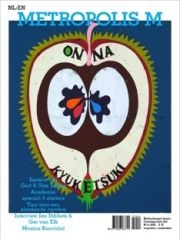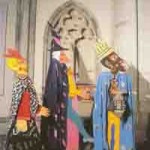Carolus Clusius is at the root of my present problem - can't let go of…
Let ‘m in from the beginning
 A subject dear to any student after graduation: how to make a name for yourself in the art world. Metropolis M – a Dutch art magazine – did an article about this subject titled ‘how to star‘.
A subject dear to any student after graduation: how to make a name for yourself in the art world. Metropolis M – a Dutch art magazine – did an article about this subject titled ‘how to star‘.
Of course I have my private dreams of stardom, so I read the article with interest. And extracted a to-do list from it. Here goes:
Initiate your own exhibitions with, for example, a group of fellow students and approach gallery owners, curators and art critics to look at your work. Get together with others to set up an exhibition location or artists’ initiative, but do not get too tied up in it for too long.
Open a shop in an empty building.
![]()
Get into a graduate programme. Do a residency. Go out and work as an assistant to artists or at art institutions.
![]()
Be sure to see lots of exhibitions and stay well informed.
Go to openings. A gallery owner will always be more interested in looking at your work if they have seen you in their gallery before. Turn on the charm. Do not send your portfolio to galleries, curators or museums without being asked.
![]()
Find grants to create a period of time in which you can focus exclusively on your activities as an artist.
Building a career is a marathon, not a sprint. Believe in your work and its right to exist. Make work you like yourself, because if you are successful, you may be making it for quite some time.
Pretty sound advice. Pretty traditional, too. What strikes me is that it is all based on studio-based artistic practice, a model that I consider out-of-date. To quote from my game/essay, the part titled ‘mythology of the solitary effort’:
“Traditionally, artists propel their work into the public domain by a process of linear re-territorialisation so well described in Daniel Buren’s ‘The Function of the Studio’, 1979. The work of art moves from the studio to the gallery to the museum or the collector’s home, abandoning the environment in which it came to be for a place in the institutional framework. Moving thus, the work is circumscribed, is given safe and secure limits; one could say that it is tamed and placed into an easy-to-recognize category.”
Business models for non-art organisations have evolved quite a lot in the 20th century. The early 20th century saw the ‘Henry Ford’ business model emerge – produce huge quantity at low cost. Then we had the ‘razor and blades’ business model: offer the basic product at low cost (the razor) and make your profit with the refill (the blade). Mc Donalds chipped in in the 1950 with the franchise formula. Mass retailing was introduced in the 1960’s with (f.ex.) hypermarkets and Toys R Us. The spread of the Internet caused yet another business model: mass customisation (Dell Computers, Amazon).
I know of very few examples where artists have taken advantage of the Internet to structure their ‘business model’ in a new way. I’m not talking of ‘net-based art here, but a ‘net-based way of working. Amazon and Dell invite their customer in at the start of their production process, not at the end. Can artistic practice be structured along these lines? My own try-outs include an online art/game/essay and this weblog – I certainly let people in from the beginning. Would be interesting to see if Internet can change the art world in as fundamental a way as it is changing the world of commerce.
| « Two hundred | <-- previous post | next post --> | Great expectations » |
|---|







